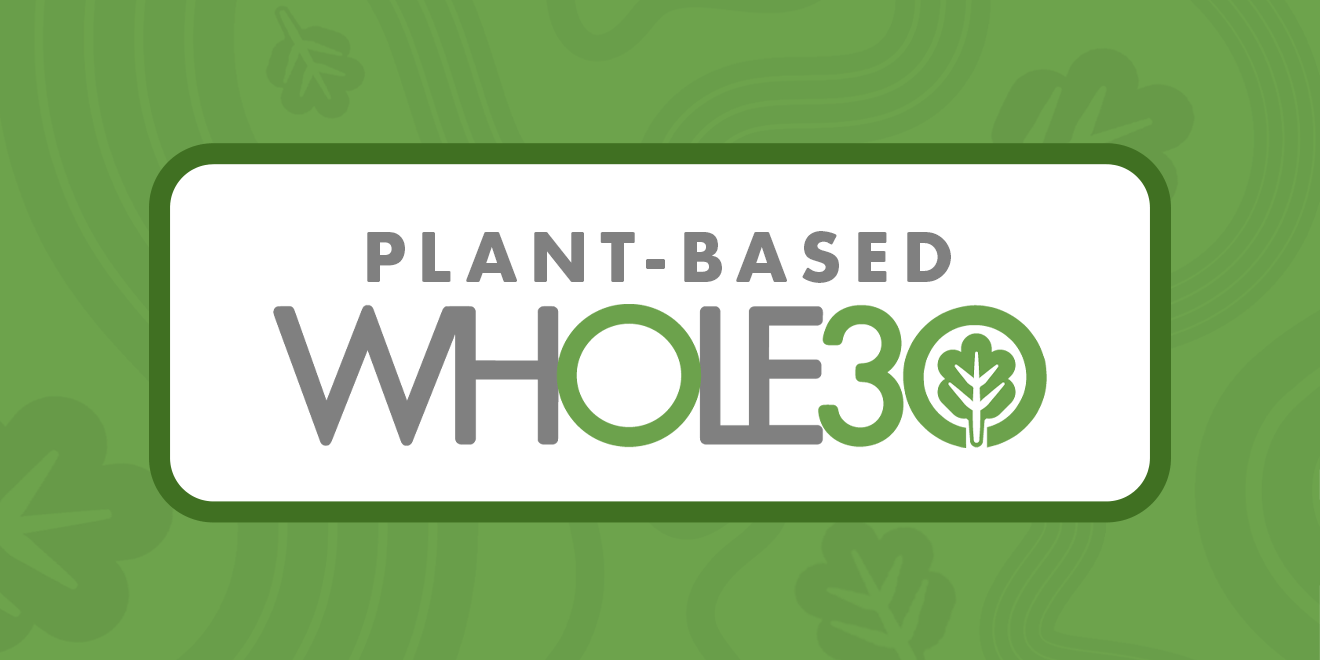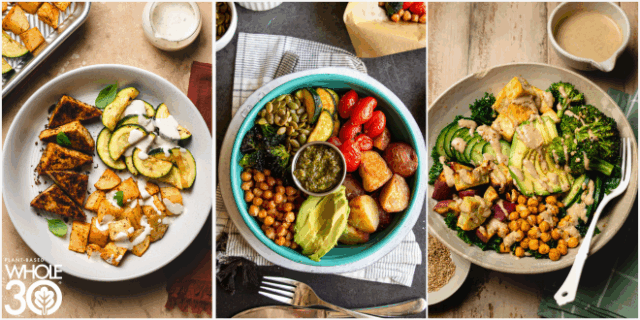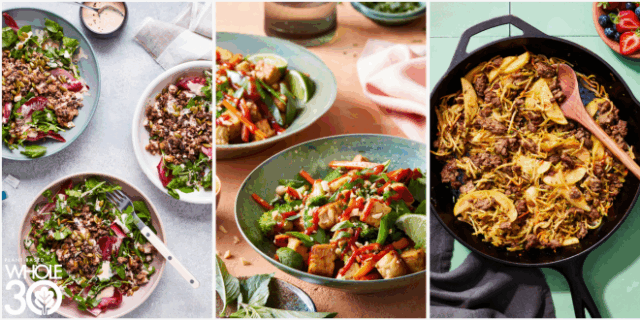Protein is a hot topic on Plant-Based Whole30. You’ve heard us talk about how plants have protein and how to get enough protein while eating plant-based. Proteins are made of building blocks called amino acids. In total, there are around 20 amino acids, but nine of them are essential, meaning they can only come from food sources. And lysine is one of those amino acids you need to acquire through your diet.
In this post, you find answers to some key questions about this essential amino acid: what is lysine, what foods have lysine, what are the benefits of lysine, and how you can get lysine in a vegan diet.
What is lysine?
First, it’s one of the nine essential amino acids—the component parts of proteins, which your body uses as building blocks. The term “essential” is used to signify that your body can’t make lysine and you have to get it from food. But lysine is mainly found in meat, fish, and cheese, all items which are excluded during your Plant-Based Whole30. Luckily, this important nutrient isn’t exclusive to animal-based sources, but it is something plant-based eaters may need to look more closely at when planning meals.
One of the notable functions and benefits of lysine is its role in collagen production. Collagen is a structural protein that forms the framework for your connective tissue—like skin, bones, and tendons. This important protein may also play a significant role in supporting a healthy immune system by aiding in the production of antibodies, which are key to fighting off infections and diseases.
So there’s a lot of reasons to pay attention to your lysine intake. Research recommends getting 38 milligrams (mg) for every kilogram you weigh. That would be about 2,600 mg (or 2.5 grams) for a person weighing 150 pounds. Even on a plant-based diet, this is very achievable.
Although you eat plant-based proteins that might be lower in lysine, eating a variety of plant-based proteins during the day helps ensure you meet your needs. (You’ll read more about lysine sources in foods you can eat during your Plant-Based Whole30 below.)
Why is lysine important in the diet?
Because lysine is an amino acid, it’s important for various reasons in the body. The major benefit of lysine—and many of the other proteins in your body—is aiding in the growth, maintenance, and repair of body tissues. This especially comes into play in the recovery and rebuilding of muscle tissue after exercise or injury.
Another benefit of lysine (and amino acids, in general) is the creation of enzymes. Proteins act as catalysts for processes like digestion, metabolism, and energy production. Without these enzymes, your body might not function as efficiently.
Lysine not only works with other essential amino acids, but can also help support increased calcium absorption. This can be very helpful for building stronger bones and protecting bone health as you age.
If any amino acids like lysine are missing in your diet, you may notice some health issues. These can include decreased immunity, digestive problems, changes in moods, and lower mental alertness—to name a few. Of course, if you have any concerns check in with your healthcare provider.
What foods have lysine?
You know what lysine is and what the benefits of lysine are. So you’re probably pretty motivated to make sure you’re feeding your body enough lysine. As mentioned above, this task is made harder by the foods that typically contain the most lysine being animal-based. But it’s certainly doable with a little bit of planning and targeting the right foods.
Let’s take a look at some plant-based sources of lysine. (PS: all of these options are Plant-Based Whole30 compatible.)
- Lentils (1 cup cooked): Approximately 2.5 grams of lysine.
- Chickpeas (1 cup cooked): Approximately 2.6 grams of lysine.
- Black beans (1 cup cooked): Approximately 1.3 grams of lysine.
- Kidney beans (1 cup cooked): Approximately 1.7 grams of lysine.
- Peanuts (1 ounce, about 28 grams): Approximately 0.6 grams of lysine.
- Pumpkin Seeds (1 ounce, about 28 grams): Approximately 0.5 grams of lysine.
- Hemp Seeds (1 ounce, about 28 grams): Approximately 1.4 grams of lysine.
- Tofu (4 ounces, about 113 grams): Approximately 1.2 grams of lysine.
- Tempeh (4 ounces, about 113 grams): Approximately 1.6 grams of lysine.
- Chia Seeds (1 ounce, about 28 grams): Approximately 0.6 grams of lysine.
- Spirulina (1 tablespoon, about 7 grams): Approximately 0.9 grams of lysine.
How to incorporate lysine into your plant-based eating
To better reach your daily lysine goals, aim to have around 3-4 servings of higher lysine food listed above daily. Using a combination of the legumes, seeds, and soy-based proteins should fit great into your Plant-Based Whole30 meal planning.
But if you need some ideas, here are some recipes that have higher lysine ingredients:
Plant-Based Whole30 Lentil-Walnut Nachos
In some cases, lysine supplements can be considered to ensure sufficient intake. Before taking any supplements, always consult your doctor, healthcare provider, or registered dietitian.















